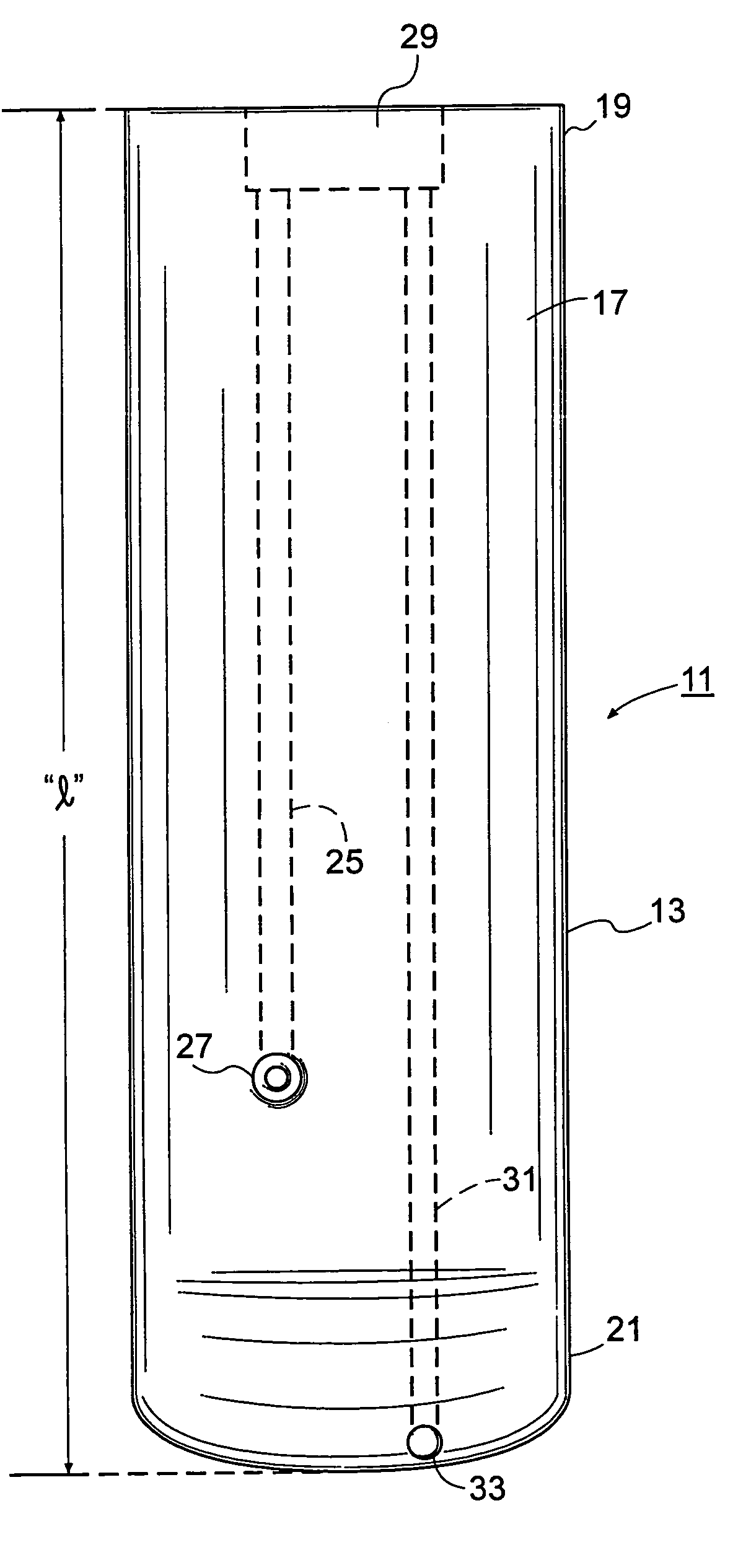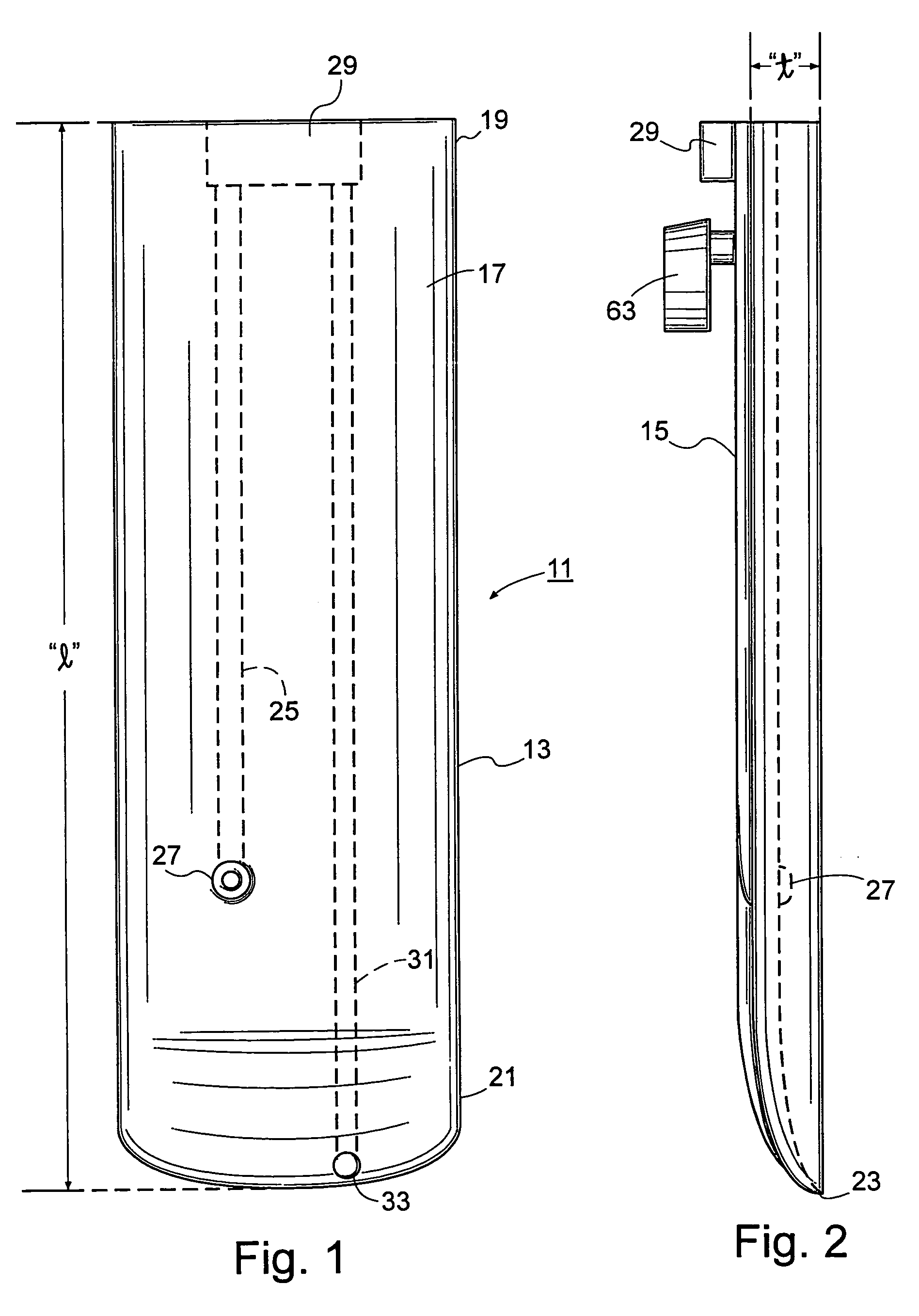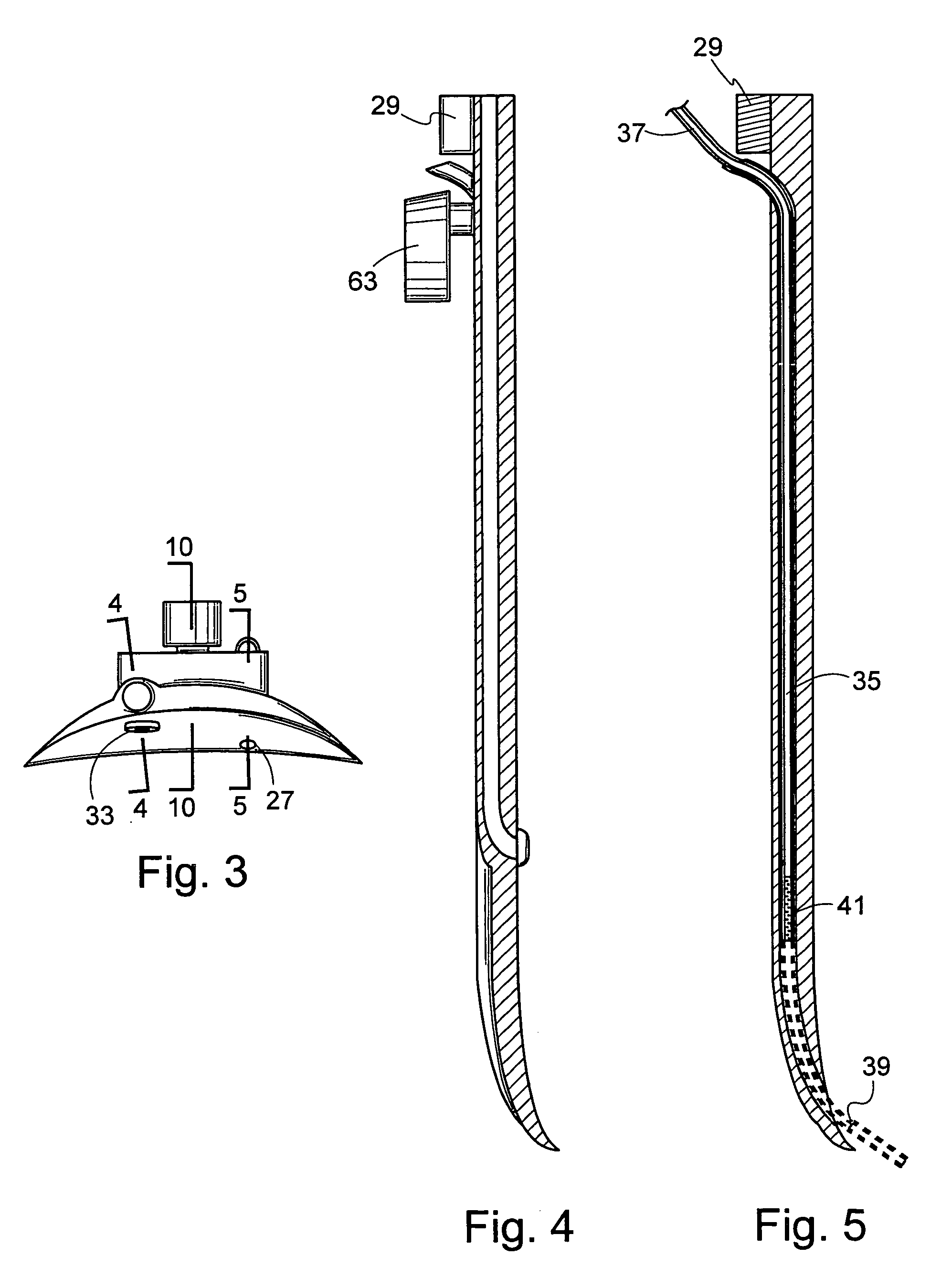Minimally invasive surgical spinal exposure system
a spinal exposure and minimally invasive technology, applied in the field of minimally invasive surgical instruments, can solve the problems of not being completely satisfactory, various tools designed, and working in small places, and achieve the effects of superior lighting and visualization, increasing the area in the visual field, and increasing the surgeon's ability to perform
- Summary
- Abstract
- Description
- Claims
- Application Information
AI Technical Summary
Benefits of technology
Problems solved by technology
Method used
Image
Examples
Embodiment Construction
[0026]Turning to FIG. 1, there is shown a retractor blade 11 of the type used in the practice of the present invention. The retractor blade 11 has a substantially elongate, planar body portion 13 having a length “1” and having a thickness (“t” in FIG. 2). The body portion 13 is also defined by an outer planar surface 15 and an inner planar surface 17. As best seen in FIG. 2, the body portion is generally uniform in thickness along the width thereof but tapers from an upper extent 19 as it approaches a lower extent 21, terminating in a tip region 23.
[0027]The elongate body portion 13 of the retractor blade has incorporated therein at least one visualization channel 25 which, in the embodiment of FIG. 1, runs from the upper extent 19 down about ⅘ of the length of the blade. The visualization channel 25 is used to house a light source which is integral with the blade itself. For example, the light source could be a light bulb 27 which is connected by electrical wires running up the cha...
PUM
 Login to View More
Login to View More Abstract
Description
Claims
Application Information
 Login to View More
Login to View More - R&D
- Intellectual Property
- Life Sciences
- Materials
- Tech Scout
- Unparalleled Data Quality
- Higher Quality Content
- 60% Fewer Hallucinations
Browse by: Latest US Patents, China's latest patents, Technical Efficacy Thesaurus, Application Domain, Technology Topic, Popular Technical Reports.
© 2025 PatSnap. All rights reserved.Legal|Privacy policy|Modern Slavery Act Transparency Statement|Sitemap|About US| Contact US: help@patsnap.com



